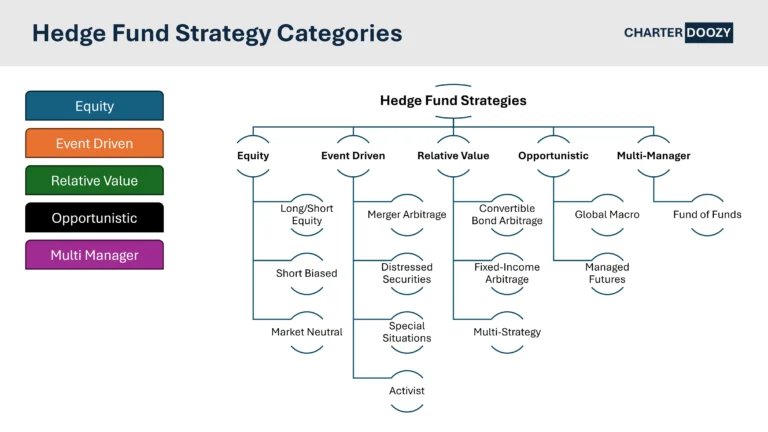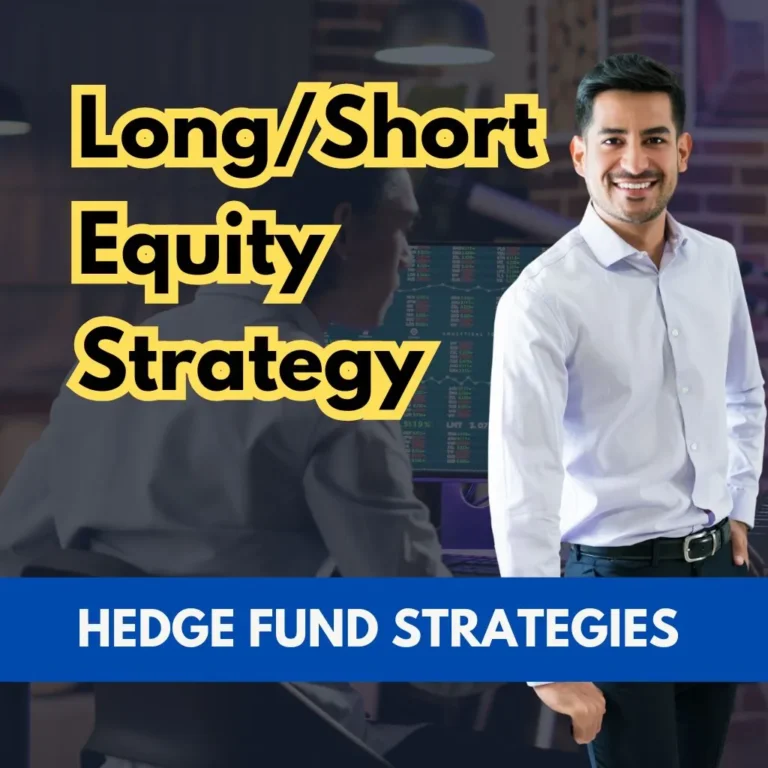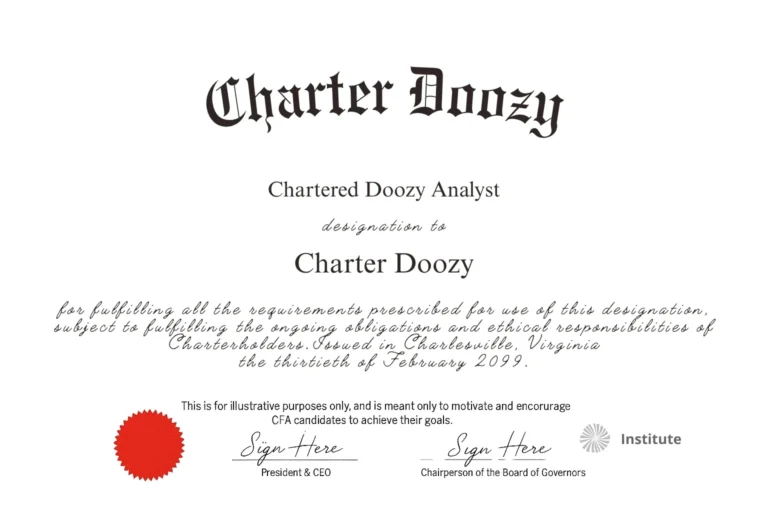The Strategic Core of Hedge Fund Investing
Hedge funds occupy a unique space in the world of alternative investments.
Unlike traditional investment vehicles that are typically constrained by regulatory mandates or benchmark-relative objectives, hedge funds are defined more by their approach than by the assets they hold.
They are known for pursuing absolute returns, often employing leverage, short selling, derivatives, and unconventional instruments to express views, manage risk, and capture opportunities.
For CFA candidates seeking a deeper understanding of hedge fund strategies, it is essential to step back and examine the strategic categories that shape this dynamic and ever-evolving domain.
Hedge fund strategies are generally organized into three broad categories: equity-based strategies, event-driven strategies, and relative value or arbitrage strategies.
In addition, a number of funds operate across multiple approaches, giving rise to multi-strategy and fund of funds models.
Each of these groupings represents a different lens on risk, return, and the mechanics of capturing alpha.
Understanding the strategic landscape, even at a high level, helps CFA candidates contextualize the many fund styles they may encounter in practice or on the exam.

Equity-Based Strategies: Exploiting Market Direction and Dislocation
One of the most established categories of hedge fund strategies is equity-based investing.
These funds typically seek to profit from the movements and inefficiencies in public equity markets but do so with greater flexibility than traditional long-only managers.
Long/short equity funds combine long positions in undervalued stocks with short positions in overvalued ones, aiming to isolate alpha while hedging market exposure.
Variants such as short-biased and market-neutral strategies further calibrate the level of net exposure, tailoring the strategy to different market regimes or investor preferences.
Equity strategies are intuitive for many investors and often serve as a gateway into hedge fund investing.
Their use of fundamental analysis, paired with tactical tools like shorting and leverage, creates a diverse spectrum of approaches… from conservative market-neutral portfolios to aggressively directional funds.
The strategic value lies in their ability to either amplify or hedge equity market exposure while still seeking idiosyncratic sources of return.
Event-Driven Strategies: Profiting from Corporate Catalysts
Event-driven hedge funds seek opportunities in corporate actions and special situations. These strategies focus on the idea that discrete, identifiable events (such as mergers, bankruptcies, restructurings, or activist campaigns) create temporary mispricings in securities. By analyzing the mechanics, timing, and risks of such events, managers position portfolios to benefit from the resolution of uncertainty.
Within this category, merger arbitrage strategies attempt to capture the spread between the current market price of a target company and the proposed acquisition price. Distressed strategies invest in the debt or equity of companies in financial trouble, betting on a turnaround, restructuring, or liquidation outcome. Special situations funds cast a wider net, trading around spin-offs, recapitalizations, or regulatory developments. Activist strategies take an even more hands-on approach, using equity stakes to influence management decisions and unlock value.
Event-driven strategies are less reliant on broad market trends and more focused on catalysts and corporate behavior. They offer diversification benefits and appeal to investors who prefer fundamental analysis tied to discrete, observable events.
Relative Value and Arbitrage Strategies: Exploiting Pricing Inefficiencies
Relative value strategies aim to profit from pricing discrepancies between related instruments, securities, or markets. These strategies often rely on sophisticated quantitative models, precise timing, and careful risk management. Convertible bond arbitrage, for instance, involves simultaneously holding a convertible bond and shorting the underlying equity to exploit mispricings between the two. Fixed-income arbitrage strategies target anomalies in interest rate curves, credit spreads, or sovereign debt relationships.
These strategies tend to have lower directional exposure and instead focus on mean-reversion and convergence. Managers use leverage to magnify small pricing differentials and often operate across liquid, global markets. While less correlated with equity market movements, relative value strategies can be exposed to liquidity crunches or systemic dislocations, particularly when crowded trades unwind simultaneously.
Opportunistic Strategies: Taking a Big Picture Approach
Some hedge funds adopt a top-down, macroeconomic lens to investing. Global macro strategies analyze geopolitical developments, central bank policy, currency flows, and fiscal dynamics to inform positions across asset classes and geographies. These funds may go long or short in currencies, commodities, interest rates, or equities based on a thesis about the direction of the global economy.
Managed futures strategies, typically run by Commodity Trading Advisors (CTAs), implement trend-following models across futures markets. These strategies are systematic, quantitative, and rules-based, relying on historical price behavior to guide trades. Both global macro and managed futures funds are known for their ability to perform well during crises or volatile periods, making them attractive diversifiers within broader portfolios.
Multi-Strategy and Fund of Funds Models: The Power of Diversification
Recognizing the strengths and limitations of individual strategies, many hedge funds combine multiple approaches under one roof. Multi-strategy funds allocate capital across teams running different strategies, often reallocating dynamically based on opportunity set or risk environment. This internal diversification helps reduce volatility and smooth returns, while allowing for tactical shifts.
Fund of Funds take diversification one step further by investing in a portfolio of external hedge funds. Instead of building trades or strategies in-house, these vehicles select best-in-class managers and assemble a composite portfolio. Investors benefit from manager selection, operational due diligence, and access to otherwise closed or high-minimum funds. However, the double layer of fees and potential opacity can detract from net performance.
Understanding the Strategic Landscape
For CFA candidates, the breadth of hedge fund strategies can seem overwhelming at first.
Yet stepping back to view the landscape through strategic categories brings clarity.
Each strategy type reflects a distinct worldview about how markets work, where inefficiencies lie, and how risk should be managed.
Whether a fund is exploiting corporate catalysts, trading global macro themes, or engineering relative value positions, it is ultimately expressing a philosophy of how to generate alpha in a complex, competitive marketplace.
Building fluency in these strategies is about exam success.
It’s also about preparing to engage with a growing segment of the investment industry.
Hedge funds are not just high-fee vehicles for the elite.
They are a laboratory of innovation, risk-taking, and disciplined conviction.
For those entering the world of investment management, understanding their strategic DNA is essential.
Final Thoughts
Hedge funds challenge the conventions of investing by operating in a space defined less by regulation and more by imagination and execution.
Their strategies, while diverse, are united by a pursuit of asymmetric outcomes… more upside than downside, more freedom than constraints.
For CFA candidates, mastering the high-level structure of these strategies lays the groundwork for deeper exploration.
In an industry where edge matters, knowing how different hedge fund strategies compete and complement each other is the start of a more informed, strategic investment perspective.














